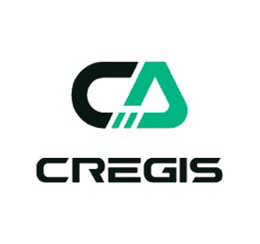Since the TRON network itself has outstanding advantages in transaction processing capabilities, transaction costs, transaction confirmation, etc., this ecosystem is becoming the largest stablecoin circulation market. It is reported that the USDT issued on the TRON network has exceeded 58 billion US dollars, accounting for more than half of the total market value of USDT. Using the TRON network to pay and trade stablecoins is not only a trend, but also a new market demand.
In fact, although the TRON network has certain advantages in transactions, in order to take advantage of this advantage, that is, to implement smart contract execution and transactions in a cost-free manner, it is usually necessary for users to have sufficient network resource energy and bandwidth.
Energy and bandwidth in the Tron network are two resources used to perform transactions and smart contract operations on the network. The mechanism is designed to ensure the stable operation of the network and prevent resource abuse.
Among them, energy is mainly used to process the execution of smart contracts. In the Tron network, the execution of smart contracts requires a certain amount of computing resources. Energy is used as a unit to measure and limit the use of such computing resources. The more complex the smart contract is, the more energy is required to execute it. If users want to execute smart contracts, they need to ensure that there is enough energy to cover these computing costs.
Users can obtain energy in two ways, including:
Freeze TRX: Users can choose to freeze their TRX tokens to gain energy. Frozen TRX tokens cannot be traded for a certain period of time, but provide energy for users to execute smart contracts without paying fees directly.
Buying Energy: If users do not have enough frozen TRX or do not want to freeze TRX, they can choose to directly pay TRX to buy the required energy (this method is similar to leasing).
• Bandwidth is used in the Tron network to perform simple transactions, such as TRX transfers. Each transaction consumes a certain amount of bandwidth, and the amount consumed depends on the size of the transaction data. Similar to energy, users can obtain resources by freezing TRX or purchasing bandwidth with TRX, but bandwidth resources are reset daily, and users will receive new bandwidth quotas every day, which also means that many users with instant and large-scale transaction needs have a strong demand for bandwidth resources.
When users freeze TRX, they lose liquidity for those tokens, but in return they gain the resources needed to execute transactions and smart contracts without having to pay extra fees. Users can unfreeze TRX at any time after deciding, but usually have to wait for a three-day unfreezing period. In addition, newly created accounts on the Tron network are inactive, meaning they do not yet have space in the network to record their information and balances. In order to start making transactions and utilizing other features on the network, accounts must be “activated.”
Activating an account requires sending a certain amount of TRX to the account. The main purpose of this is to prevent malicious users from creating a large number of empty accounts to attack or abuse the network, because each account consumes network resources to maintain its status and transaction history.
Therefore, we can see that for corporate users, if they want to execute smart contracts on the TRON network to perform batch transactions or make some batch transfers, they need to pledge or pay a large amount of TRX tokens. At the same time, when the bandwidth of the day is exhausted when the user performs batch transactions, they need to increase the TRX pledge or purchase bandwidth resources. For many instant transactions, most users usually choose to pay TRX to purchase resources to avoid the capital occupation caused by staking TRX.
Cregis Tron Energy Mode saves an average of 30% in transaction fees
Cregis is a digital asset collaborative management solution built for the Web3.0 field. It aims to provide secure and easy-to-use self-hosted collaborative services for Web3 teams and project parties. In its officially launched V2.5 version, it released the Tron Energy Mode function, which is further reducing the cost of users using the TRON network.
Cregis Tron Energy Mode can advance the transaction and collection fees of the Tron series for users. When users need to obtain resources, are short of resources, or activate accounts on the TRON network, they can obtain resources from Cregis at a lower cost. This function can help users save an average of 30% of Tron network transaction mining fees. It is especially suitable for some users who have immediate batch transaction needs on the TRON network, smart contract execution needs, and temporary resource shortages.
At the same time, Cregis is also an excellent asset management tool, which will help users to understand transaction data and account fee records more clearly and easily, so as to better achieve one-stop financial management and improve financial efficiency. With Cregis, trading on TRON will further reduce costs and increase efficiency.
About Cregis
Cregis has built a digital asset collaborative management solution for the Web3.0 field, aiming to provide secure and easy-to-use self-hosted collaborative services for Web3 teams and project parties. In this protocol management solution, the wallet function is the most core and important module. At present, we have adopted mainstream cryptographic technologies including MPC private key sharding, TEE encryption environment and privacy computing to build a new asset management system.
Cregis has been focusing on providing enterprises with crypto asset management tools and solutions since 2017, including MPC wallet services, transaction interface APIs, etc., and has developed a set of open-source verifiable underlying technical capabilities. It has currently served more than 3,200 exchanges, project parties, Crypto Funds, cross-border e-commerce and other Web3 companies and teams, with an average daily turnover of more than 30 million US dollars on the chain.










